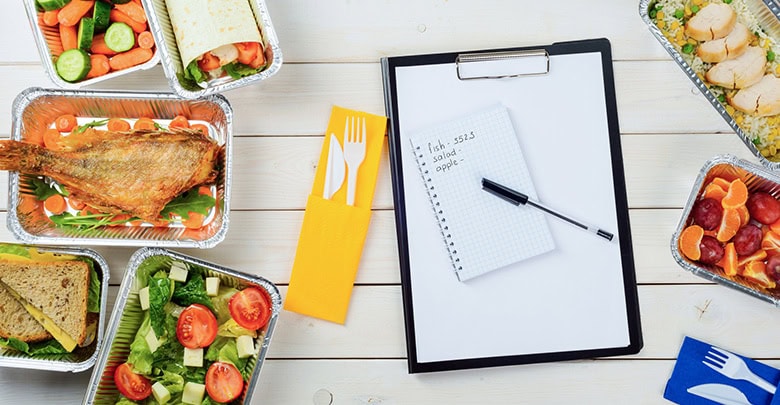Bolus Dosing Skills that you Didn’t Learn in the Doctor’s Office
Complex foods mix fats, proteins and carbs and require advanced carb counting and insulin dosing strategies

Carbohydrate counting (or carb counting) is a traditional method for mealtime insulin dosing. It utilizes insulin to carb ratios for calculating meal doses. The Insulin-Carb ratio has been taught for years and is a decent method for dosing insulin based on what you are eating.
Problems with Insulin-Carb Ratio Dosing
Issue #1 – Most meals are not JUST carbohydrates; they are a mixture of fats, proteins, and carbs. These three nutrients digest at different rates and because of this, your insulin may not match the curve of the glucose rise from your meal.
- High-fat meals digest slowly, thereby slowing glucose absorption
- The major difference is seen at about 1 hour, right when your rapid-acting insulin is peaking
Issue #2 – Free fatty acids cause insulin resistance. Because of this, insulin requirements would need to be higher to handle the glucose load from a meal that contains carbs but is also high in fat.
Issue #3 – Glycemic index (GI) is not synonymous with grams of carbohydrate for food. Therefore, some meals will produce a higher more rapid blood sugar spike (high GI) while other meals cause a more gradual rise in glucose (low GI), even though the meals may contain the same amount of carbohydrate.
Issue #4 – Individuals are all over the map with their carb counting skills. However, it’s interesting to note that precision is likely more impactful than accuracy when it comes to carb counting and improving A1C. Precision is valuable because consistency, whether wrong or right, enables a more reliable insulin-carb ratio.
Optimizing Strategies
Consider these research findings when optimizing your insulin dosing strategies.
High Fat/High Protein Meals
One study used pizza with extra cheese for the high-fat meal compared to just pizza crust with sauce.
- Pizza with extra cheese added 40 grams of fat and 36 grams of protein to a 50-gram carbohydrate meal. In this case, the optimal insulin dose was 65% ± 10% higher compared to a carb-only meal.
- The ideal insulin dose was delivered over 2-3 hours at a split of 30/70% on average (some needed less or more insulin up front).
- Insulin doses required for the high-fat meal were 17% up to 124% more than what would have been calculated using the insulin to carb ratio method.
Protein Drinks
Another study looked at the effect of protein drinks on blood sugar.
- Consuming 75 grams of protein had similar effects on blood sugar to that of eating 20 grams of carbs, but the protein drink caused more of a delay in glucose rise than what you would see with eating a carb-only meal.
Glycemic Index
Multiple studies have analyzed the effects of glycemic index on post-meal blood sugars.
- High-GI foods tend to cause a rapid spike.
- Low-GI foods have a lower overall glucose rise but could lead to early hypoglycemia if blood sugar is in range at the start of the meal and insulin dose and timing is not adjusted to compensate for this.
Continuous Glucose Monitors (CGMs)
CGMs help you better understand your body.
Your CGM data combined with tracking your food intake and insulin dosing enables you to fine-tune your approaches for handling high fat, high-GI and low-GI meals.
Advanced Insulin Dosing Strategies
Here are some strategies to consider.
- Think about using a dual-wave bolus (or combo wave bolus) for high fat and low-GI meals, and tweak your insulin split and duration based on your CGM data.
- MDI users might consider
- Delaying injection of rapid-acting insulin for high fat and low-GI meal. This delay is particularly significant if your starting BG is already on the low-end.
- Splitting your dose with part of the dose before the meal and part one to two hours later to simulate a dual wave bolus.
- You may also consider the use of Regular insulin (Humulin R, Novolin R) for use with high-fat meals that have a delayed gastric emptying.
- Use your post-prandial glucose data to figure out if and how much insulin you need to handle protein-only meals, like a protein shake, or protein and fat-only meals, typical of a low-carb or Keto diet approach
There is great variability between individuals in their sensitivity to dietary fat. Start conservatively with advanced insulin dosing for high-fat meals. If you struggle with high blood sugars many hours after eating high-fat meals, consider a 15-20% increase in your insulin for those meals, along with a 2-3 hour delivery time. If that’s not quite enough, bump it up another 5% until you find your sweet spot.
References
Bell KJ, Smart CE, Steil GM, Brand-Miller JC, King B, Wolpert HA. Impact of Fat, Protein, and Glycemic Index on Postprandial Glucose Control in Type 1 Diabetes: Implications for Intensive Diabetes Management in the Continuous Glucose Monitoring Era. Diabetes Care, 2015; 38:1008-1015
Bell KJ, Toschi E, Steil GM, Wolpert HA. Optimized Mealtime Insulin Dosing for Fat and Protein in Type 1 Diabetes: Application of a Model-Based Approach to Derive Insulin Doses for Open-Loop Diabetes Management. Diabetes Care, 2016; 39:1631-1634
Paterson MA, Smart CE, Lopez PE, McElduff P, Attia J, Morbey C, King BR. Influence of Dietary Protein on Postprandial Glucose Levels in Individuals with Type 1 Diabetes using Intensive Insulin Therapy. Diabetic Medicine, 2016;33:592-598